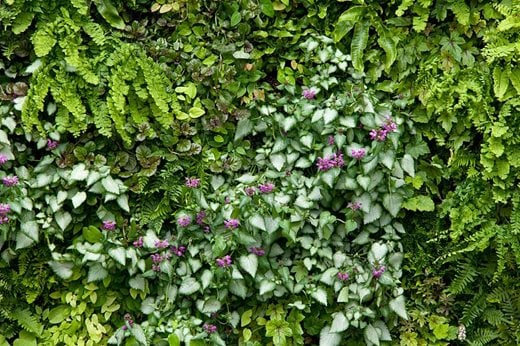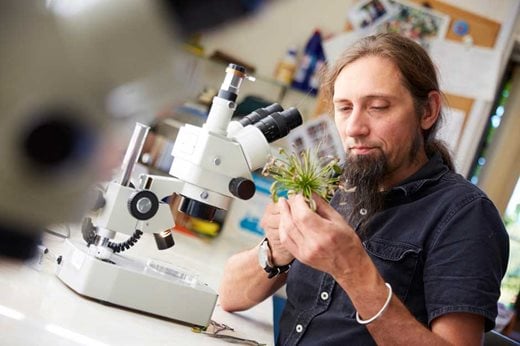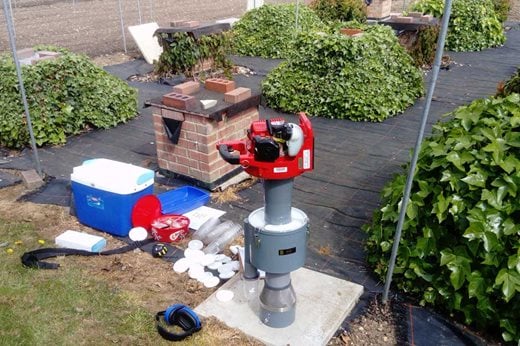Green walls are good for our environment but their wildlife value is unknown. An RHS project is starting to find out
 It’s common knowledge that we need more greenery, especially in urban areas, and I’m proud to work for a society that actively promotes more planting and the Greening Grey Britain campaign.
It’s common knowledge that we need more greenery, especially in urban areas, and I’m proud to work for a society that actively promotes more planting and the Greening Grey Britain campaign.
More plants means improved wellbeing, helps mitigate pollution and flooding, can reduce extremes of temperature and provide a habitat for wildlife. Green walls (plants that grow on, in or up vertical surfaces) are a valuable part of this greening. They are particularly useful where ground space is limited and contrary to the beliefs of many, correctly-chosen plants can protect rather than harm walls. But what value do they have for wildlife?
The value of ‘horizontal’ gardens has been demonstrated in works such as Jennifer Owens’ garden study (RHS Wildlife of a Garden. A Thirty-Year study, 2010), the Sheffield BUGS project and the RHS’s Plants for Bugs study , yet very little is known about the wildlife of green walls. Plants growing up or on walls must surely provide resources for animal life, but to what extent and for which animal groups?
The RHS Green Walls and Biodiversity project is beginning to answer some questions about green walls and the wildlife they support. The first question to be tackled is do different species and cultivars of climbing green wall (façade) plants support different abundances of invertebrates?
 An experimental approach
An experimental approach
Objective: Measure the abundance of invertebrates* on three climbing plant species widely used as green wall (façade) cover.
*Invertebrates (including beetles, true bugs, spiders and springtails) are good biodiversity indicators
The work of designing the project then began. Fortunately a potentially suitable set up already existed at the University of Reading, used previously to investigate the insulation properties of green walls. The 20 model buildings are brick-built cubes (60x60x60cm), each planted with one of five green wall treatments; no plant (control), common ivy (Hedera helix), common ivy ‘Glacier’ (H. helix ‘Glacier’), Boston ivy (Parthenocissus tricuspidata ‘Veitchii’), and climbing hydrangea (Pileostegia viburnoides). There are four replicates of each treatment and the experiment is laid out in a randomised design. The design was checked with a statistician to ensure it met rigorous scientific standards.
 Vacuuming invertebrates and measuring plants
Vacuuming invertebrates and measuring plants
One of the most reliable methods of sampling invertebrates from vegetation is a suction sampler (a “petrol-driven insect vacuum” - see photo). When sampling, the nozzle of the suction sampler is placed within the foliage for 10 seconds on each side of each building and invertebrates are drawn into the apparatus. The invertebrates are transferred to collection tubes for identification in the laboratory. Recording will take place on five occasions during the spring and summer to pick up any changes throughout the growing season.
Measurements of vegetation depth and area of wall cover will also be made, different species of plant grow at different rates and it is possible that volume of plant material has an effect on invertebrate numbers.
Reporting and advice
After all the invertebrates are identified the process of data analysis will begin. The results will be prepared for publication as a scientific paper and accessible practical advice will be produced for gardeners.
Future work
This project may just be the beginning of investigations of wildlife value of green walls. It only tests three species of plant used as self-supporting green walls, there are other plant species commonly grown as green walls as well as mixtures of species. A wide diversity of cultivars, with an array of characters (e.g. leaf shape and size), are available to grow and may have different wildlife values. There are also other types of green wall, including those where plants grow from within the wall or on structures attached to walls. This project will help identify priorities for future work to investigate the value of green walls for wildlife.
More information
Climbers and wall shrubs – RHS advice
Green walls – RHS advice
Greening Grey Britain campaign
RHS Plants for Bugs study
University of Reading School of Agriculture, Policy and Development
RHS Green Walls and Biodiversity project

